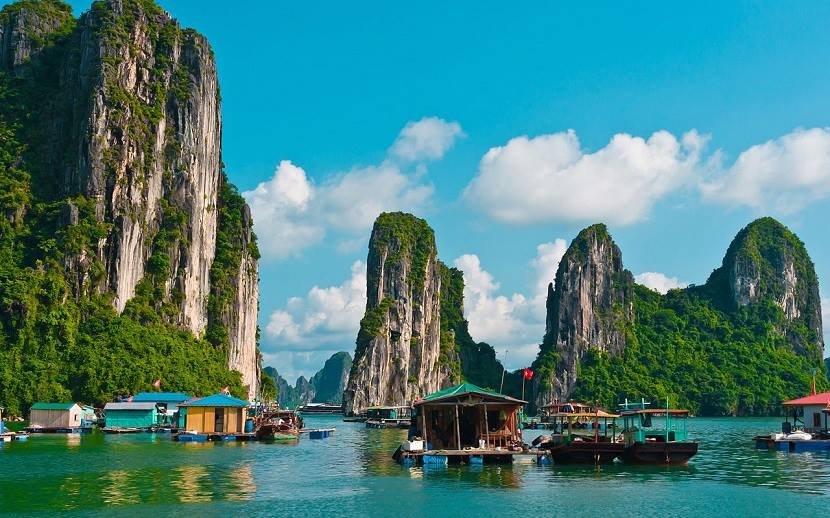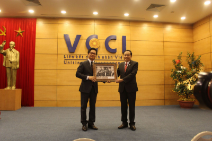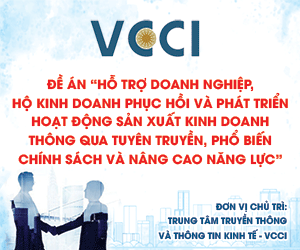Ho chi minh city Prioritizing Investment Attraction and Business Growth
Over the past 50 years, Ho Chi Minh City has affirmed its role as an economic locomotive and a central contributor to overall national development. As an economic, cultural and scientific and technological center, the city has constantly strived to attract investment capital and develop businesses.
A proven economic locomotive
After 1975, HCM City confronted enormous difficulties: stagnant production, high unemployment and a centrally planned economic model that was not suitable for the dynamic characteristics of the city. In that context, the city flexibly experimented with new policies such as production contracting, small private business development and border trade, which provided a good premise for the later Doi Moi (renovation) process.

Prime Minister Pham Minh Chinh and HCM City’s leaders conduct the inauguration ceremony of the Center for the Fourth Industrial Revolution (C4IR) at the Saigon Hi-Tech Park, September 2024
The Doi Moi policy initiated in 1986 opened up great opportunities for the city in attracting foreign direct investment (FDI). By 2000, the city had attracted about US$12 billion of FDI capital, accounting for 30% of the total FDI capital in the country. Large corporations such as Intel, Samsung, Procter & Gamble and Unilever have invested in the city and helped boost economic growth.
In 2001-2010, HCM City continued to affirm its role as an economic locomotive: Annual average GDP growth was 11%, higher than the country's growth. The city contributed 30% of the national budget and accounted for 20% of the country's total export value. It also invested a lot in infrastructure with projects such as Phu My Bridge, East-West Highway and Ho Chi Minh City - Long Thanh - Dau Giay Expressway, helping connect regions and sharpen competitiveness. The formation of high-tech parks and financial zones has created the foundation for the so-called knowledge-based economic model.
From 2010 to 2020, amid regional competition and digital transformation trends, the city proposed sustainable development strategies. For 2020-2025, the focus is on developing high technology, finance, and smart urban areas, promoting startups and innovation, with the goal of becoming a financial technology hub in Southeast Asia. By 2025, the city aims to mobilize VND620 trillion in social investment.
HCM City's 50-year journey is a testament to its relentless efforts in addressing challenges and seizing opportunities. With a strategic vision and government-public consensus, the city is making steady progress on the path to becoming a global city and actively contributing to the overall development of Vietnam. Despite still facing many challenges such as regional competition, urbanization pressure and sustainable development requirements, with a solid economic foundation, a young workforce and flexible policies, HCM City has great opportunities to continue development and affirm its position on the regional and world economic map.
To further promote its role as an economic locomotive, HCM City proposed seven groups of solutions to obtain the double-digit growth target in 2025. Accordingly, the city will focus on boosting the digital economy, developing infrastructure, attracting high-quality investment, improving the business environment, raising the quality of human resources, encouraging innovations and enhancing international cooperation. To keep pace with the development of the city and the country in the new era, the business community needs to concentrate on the following factors: Innovation: Applying new technology, improving production and management processes to boost productivity and product quality; Sustainable development: Focusing on environmental and social factors in business, aiming for sustainable development. In particular, it is necessary to uphold the spirit of self-reliance, effectively apply specific policies, and complete its economic growth target as required by Prime Minister Pham Minh Chinh.
Businesses are an important driving force for growth
In economic development, HCM City has always played a leading role in many fields in the country. To maintain and promote this position, the city has been applying many effective investment attraction and business development strategies.

Over the past 50 years, Ho Chi Minh City has solidified its position as an economic locomotive and a key driver of national development
Since 1988, HCM City has witnessed a remarkable increase in FDI inflows. By 2024, the city licensed more than 13,000 FDI projects with over US$58 billion of registered investment capital. The most-invested sectors included processing and manufacturing, real estate, wholesaling and retailing. In the first two months of 2025 alone, HCM City attracted nearly US$366 million from newly licensed and capital-increased projects, an increase of 87% over the same period in 2024.
In tune with investment attraction, HCM City has also seen a sharp growth of companies, from a few thousand in the 1980s to more than 500,000 in 2024, contributing about 23% of the country's GDP and 30% of the national budget. The private economic sector has made an important contribution to the city's economic development. According to data from the National Enterprise Registration Information Portal, HCM City currently has 345,560 operating enterprises. In 2024, as many as 48,667 new companies were established in the city, accounting for 31% of the country's total and averaging more than 4,000 new companies established each month.
In addition to developing their operations in the city, companies have expanded their investment to other provinces and cities, thus contributing to developing their economies. In particular, they have invested in many infrastructure projects, industrial parks and services in neighboring provinces, created jobs and promoted the transformation of their local economic structure. According to the report of the Ho Chi Minh City Export Processing and Industrial Zones Authority (HEPZA), HCM City-based companies have invested in more than 200 projects with about US$5 billion in Southeast and Mekong Delta provinces. These projects are centered on industrial manufacturing, high-tech agriculture and logistics services.
To boost investment attraction and business development, over the past years, HCM City has focused resources on building essential infrastructure, specifically transport infrastructure and technology infrastructure, to facilitate business activities and attract large-scale, high-tech FDI projects. The city has also striven to create a friendly, efficient, open and equal investment environment; review and streamline administrative procedures, remove hassles and reduce costs for businesses; and implement support policies and facilitate private businesses to accelerate their development. HCM City has also encouraged the business community to continue innovation, achieve sustainable development and elevate their competitive position in the market.
Businesses, especially the private sector, are an important resource and driving force for HCM City to achieve its double-digit growth target in the coming years. With strategic orientations and continuous efforts, the city is on the path to stunning development to reaffirm its role as the country's economic locomotive. The companionship and development of the business community will be key to helping the city to ascend in the new era.








